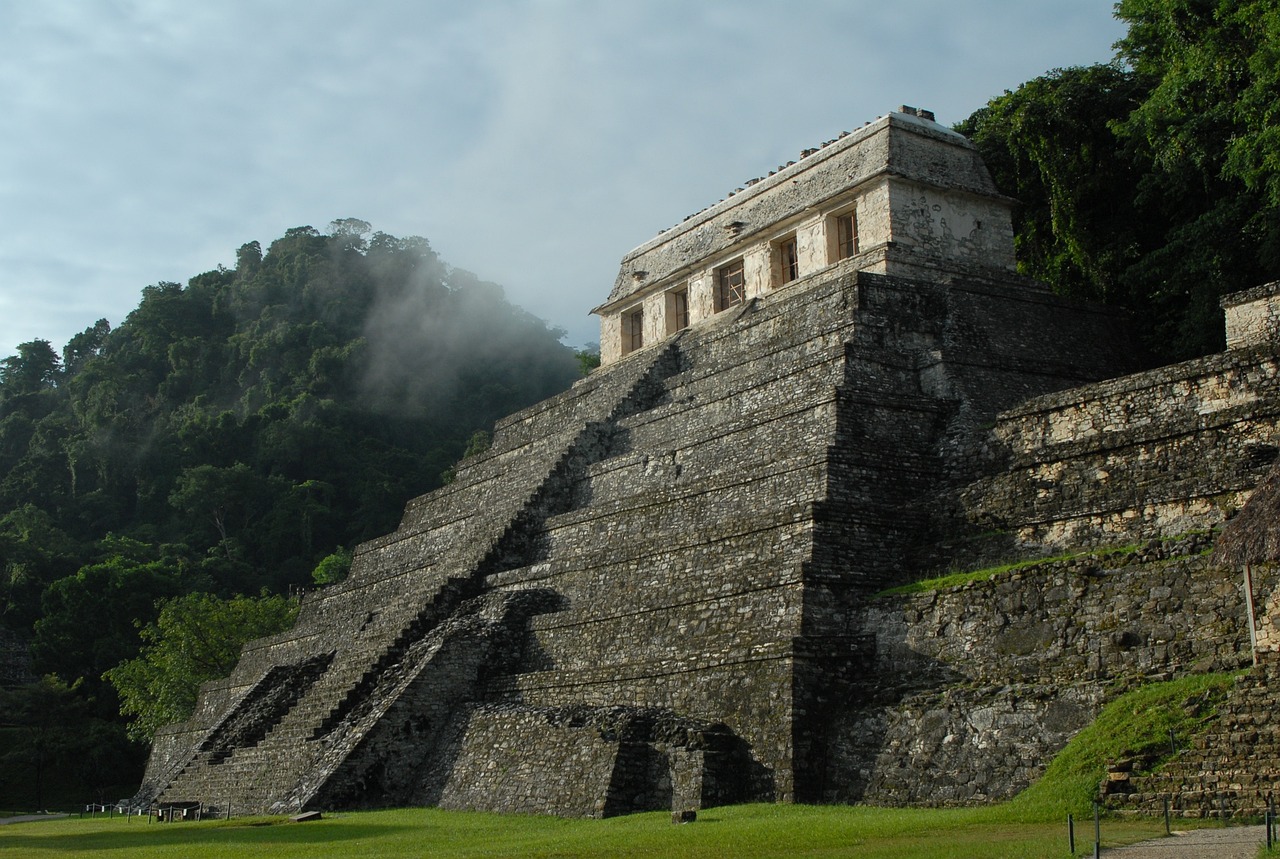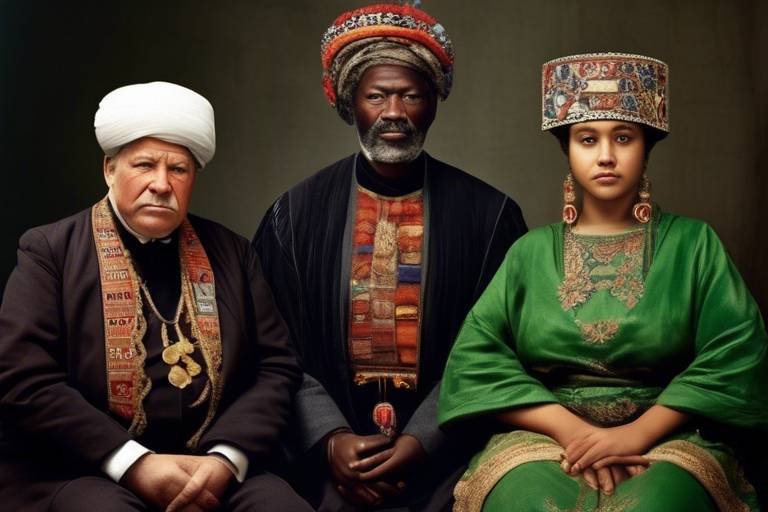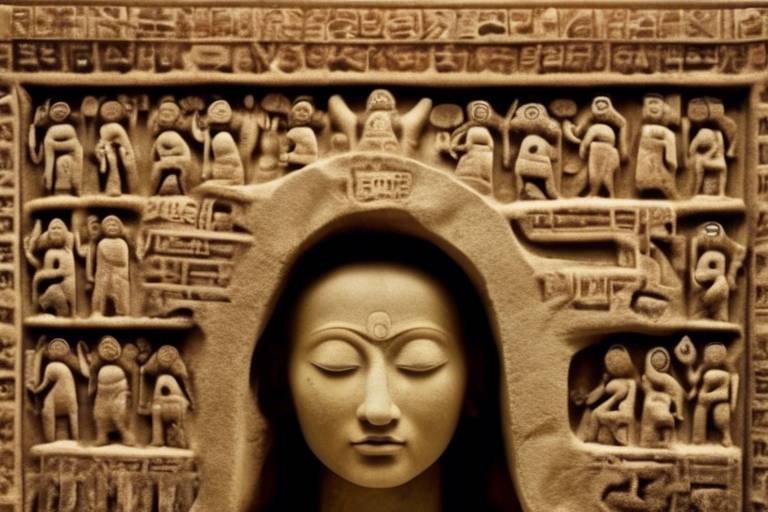The Importance of Archaeological Methodology
Archaeological methodology serves as the cornerstone of unraveling the mysteries of ancient civilizations and understanding our shared human history. By employing a meticulous approach to excavations and analyses, archaeologists can piece together the puzzle of the past with precision and accuracy. The systematic methods and scientific techniques utilized in archaeological research not only unearth artifacts and sites but also provide invaluable insights into the lives, cultures, and achievements of our ancestors.

Stratigraphy
Exploring the significance of proper archaeological methodology in uncovering and interpreting historical artifacts and sites accurately, shedding light on the past and shaping our understanding of ancient civilizations.
Stratigraphy plays a fundamental role in the field of archaeology, acting as a time machine that allows us to delve deep into the layers of history buried beneath our feet. By meticulously analyzing the layers of soil and sediment at an archaeological site, researchers can unravel the chronological sequence of findings, painting a vivid picture of the timeline of human activities. Just like flipping through the pages of a history book, stratigraphy provides valuable insights into how ancient civilizations evolved over time, offering a glimpse into their daily lives, rituals, and technological advancements.

Carbon Dating
Carbon dating, also known as radiocarbon dating, plays a crucial role in archaeological methodology by providing valuable insights into the age of organic materials found at archaeological sites. This scientific technique relies on the principle of radioactive decay of carbon isotopes in organic materials, allowing archaeologists to estimate the age of artifacts and remains with remarkable accuracy.
By analyzing the ratio of carbon isotopes in a sample, archaeologists can determine the approximate age of the material, offering a timeline for human activities and historical events. This method is particularly useful for dating organic materials such as bones, wood, and plant remains, shedding light on the chronology of past civilizations and their interactions.
Carbon dating enables researchers to establish more precise timelines for archaeological findings, helping to unravel mysteries surrounding ancient civilizations and piece together the puzzle of human history. By combining carbon dating results with stratigraphic analysis and other dating methods, archaeologists can create a comprehensive picture of the past and refine their understanding of ancient societies.

Remote Sensing Technologies
Remote Sensing Technologies play a pivotal role in the field of archaeology, offering innovative methods to uncover hidden historical landscapes and revolutionize the way researchers study ancient civilizations. One of the cutting-edge technologies utilized is LiDAR, which stands for Light Detection and Ranging. LiDAR uses laser pulses to create detailed 3D maps of archaeological sites, allowing archaeologists to identify subtle features that may not be visible on the surface. This technology has significantly enhanced the efficiency and accuracy of archaeological surveys, enabling researchers to map large areas quickly and identify potential excavation sites with precision.
In addition to LiDAR, satellite imaging has also become an invaluable tool for archaeologists. By capturing high-resolution images from space, satellite technology can reveal archaeological sites that are difficult to access on the ground. These images provide valuable insights into the layout and distribution of ancient settlements, allowing researchers to analyze patterns of human activity over vast areas. Moreover, satellite imaging helps archaeologists monitor and protect sites from looting and environmental damage, contributing to the preservation of our cultural heritage.

Artifact Analysis
When it comes to delving into the depths of ancient civilizations, **Artifact Analysis** plays a pivotal role in unraveling the mysteries of the past. By employing various scientific techniques such as X-ray fluorescence and microscopy, archaeologists can peer beneath the surface of artifacts to uncover a treasure trove of information about the technology, culture, and trade networks of ancient societies. These methods allow researchers to scrutinize the composition, craftsmanship, and usage of artifacts, providing valuable insights into the daily lives and practices of bygone eras.

Contextual Analysis
Exploring the significance of proper archaeological methodology in uncovering and interpreting historical artifacts and sites accurately, shedding light on the past and shaping our understanding of ancient civilizations.
When delving into the realm of archaeology, contextual analysis plays a pivotal role in unraveling the mysteries of the past. It involves studying artifacts within their archaeological context, which serves as a window to the ancient world. By examining the spatial relationships, associations, and positioning of artifacts in their original setting, archaeologists can glean valuable insights into their purpose, significance, and the daily lives of the people who created them.
Imagine a puzzle where each piece not only fits into the larger picture but also tells a unique story of its own. Contextual analysis allows researchers to connect the dots between artifacts, structures, and landscapes, painting a vivid portrait of ancient societies. It provides a deeper understanding of how objects were used, traded, and valued, offering a glimpse into the cultural practices and beliefs of bygone civilizations.
Moreover, contextual analysis helps archaeologists interpret the social, economic, and political dynamics of ancient communities. By considering the spatial distribution of artifacts and their relationship to the surrounding environment, researchers can reconstruct ancient settlement patterns, trade networks, and ritual practices. This holistic approach to studying archaeological finds not only enriches our knowledge of the past but also fosters a more nuanced appreciation of human history.

Conservation and Preservation
Conservation and preservation play a vital role in safeguarding our archaeological heritage for future generations. As archaeological sites and artifacts are exposed to various environmental factors and human activities, the need for effective conservation strategies becomes paramount. By employing specialized techniques and best practices, archaeologists and conservation experts aim to protect and maintain the integrity of these invaluable remnants of the past.
One of the key challenges in conservation is balancing accessibility with protection. While making archaeological sites accessible to the public allows for educational opportunities and cultural enrichment, it also increases the risk of damage and deterioration. Therefore, careful planning and monitoring are essential to ensure that visitors can experience these sites without compromising their preservation.
Conservation efforts often involve a combination of preventive measures and active interventions. This may include monitoring environmental conditions, implementing protective barriers, and conducting regular maintenance to prevent decay and looting. Additionally, consolidation and restoration techniques are employed to stabilize and repair fragile artifacts and structures.
In some cases, conservation projects require collaboration with local communities and government authorities to ensure sustainable management of archaeological sites. By raising awareness about the importance of preservation and involving stakeholders in decision-making processes, these initiatives can promote long-term conservation goals and prevent irreversible damage.

Ethical Considerations
When delving into the realm of archaeology, ethical considerations play a paramount role in guiding the practices and decisions of researchers. One of the primary ethical dilemmas faced by archaeologists revolves around the issue of ownership. Who has the right to claim artifacts unearthed from historical sites? Should these treasures belong to the country where they were found, the descendants of the ancient civilization, or perhaps be shared globally for all to appreciate?
Moreover, cultural sensitivity is a crucial aspect that must be carefully navigated in archaeological endeavors. Respecting the beliefs, traditions, and practices of the communities linked to the archaeological sites is essential to avoid causing offense or harm. It is imperative for archaeologists to collaborate with local stakeholders and indigenous groups, seeking their input and involvement in the research process.
Excavations and research activities can also have a significant impact on local communities and the environment. The disturbance caused by archaeological digs may disrupt the livelihoods of residents or damage delicate ecosystems. Therefore, it is vital for archaeologists to assess and minimize the negative consequences of their work, striving to preserve the integrity of both cultural heritage and natural surroundings.
Furthermore, the issue of repatriation arises when artifacts are removed from their countries of origin and displayed in museums or private collections abroad. Should these items be returned to their homeland to reconnect with their cultural roots, or do they hold universal value that transcends geographical boundaries? Balancing the interests of heritage preservation and global accessibility requires thoughtful consideration and collaboration between nations.
In conclusion, ethical considerations serve as the moral compass guiding the ethical conduct of archaeologists in their quest to unravel the mysteries of the past. By upholding principles of respect, collaboration, and responsibility, researchers can ensure that their work contributes positively to our understanding of ancient civilizations while honoring the diverse perspectives and heritage of all involved parties.

Interdisciplinary Approaches
Interdisciplinary approaches in archaeology have become increasingly essential in enriching our understanding of ancient civilizations. By collaborating with experts from diverse fields such as geology, biology, and anthropology, archaeologists can bring a multidimensional perspective to their research, leading to more comprehensive and accurate interpretations of historical findings.
For example, geologists can provide valuable insights into the geological processes that have influenced archaeological sites over time, helping archaeologists better understand the environmental conditions in which ancient societies thrived. Biologists, on the other hand, can contribute their expertise in analyzing ancient flora and fauna remains, shedding light on the diet, health, and lifestyle of past populations.
Furthermore, anthropologists play a crucial role in interpreting the social structures, beliefs, and practices of ancient cultures based on archaeological evidence. By integrating these diverse perspectives, archaeologists can construct a more holistic narrative of the past, uncovering intricate connections between human societies and their environments.
Frequently Asked Questions
- What is the significance of archaeological methodology?
Archaeological methodology is crucial for accurately uncovering and interpreting historical artifacts and sites, providing valuable insights into ancient civilizations and shaping our understanding of the past.
- How does carbon dating contribute to archaeological research?
Carbon dating helps archaeologists estimate the age of organic materials, allowing for the establishment of precise timelines and the unraveling of mysteries surrounding ancient civilizations.
- What role do remote sensing technologies play in archaeology?
Remote sensing technologies like LiDAR and satellite imaging aid in mapping archaeological sites from a distance, revolutionizing the discovery and study of hidden historical landscapes.
- Why is contextual analysis important in artifact study?
Contextual analysis is crucial for understanding the purpose, significance, and relationship of artifacts to their environment, providing valuable cultural insights about ancient societies.
- What are the ethical considerations in archaeology?
Archaeologists face ethical dilemmas related to ownership, cultural sensitivity, and the impact of excavation on local communities, underscoring the importance of responsible research practices.
- How does interdisciplinary collaboration benefit archaeology?
Collaboration with experts from fields like geology, biology, and anthropology enhances the depth and accuracy of archaeological interpretations, leading to comprehensive historical narratives.



















